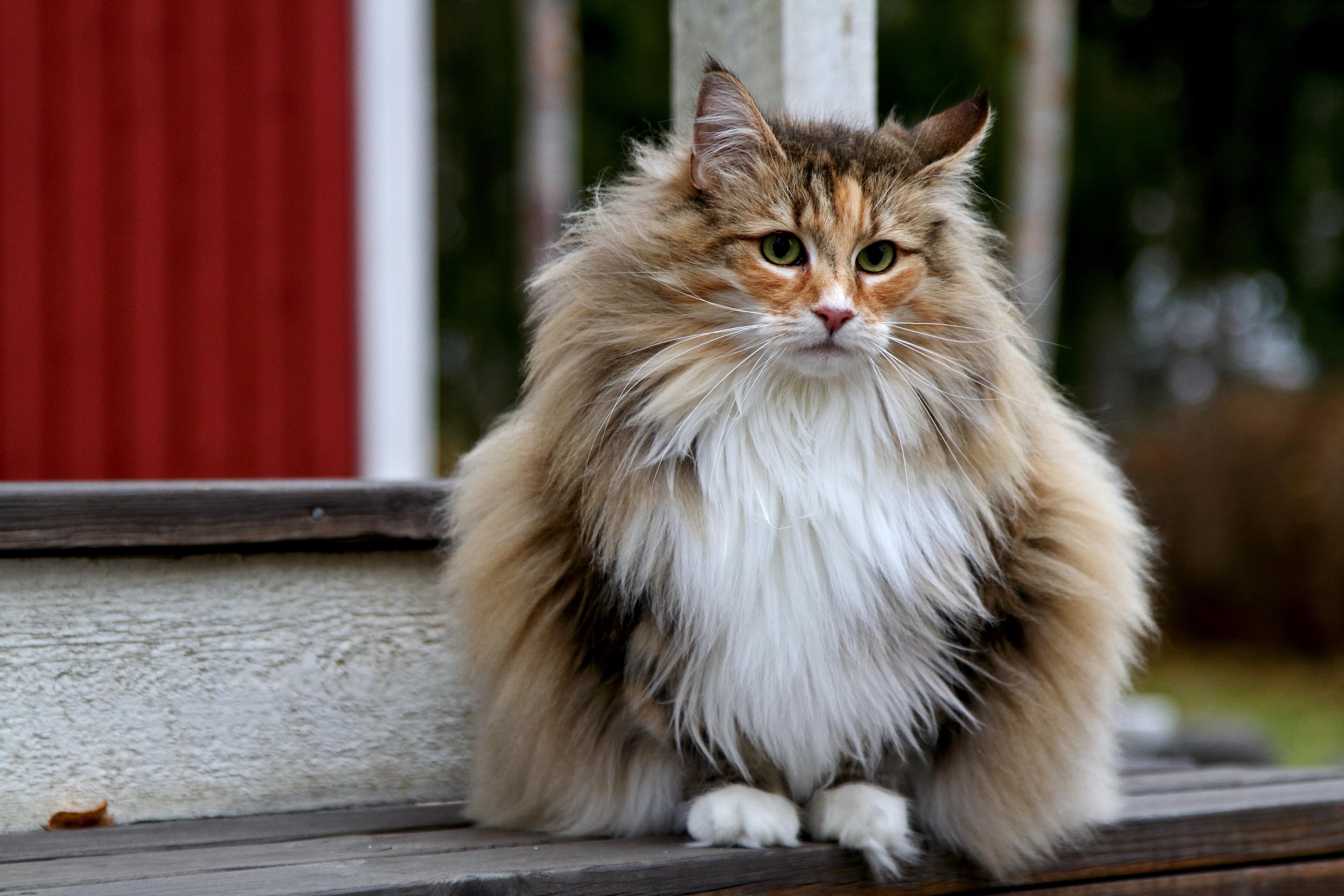Keeping an eye on your cat's toileting habits is an important part of ensuring they’re in good health. If your cat uses a litter box, it’s easy to have a quick check of their feces when you’re cleaning it, but it’s much more tricky if your cat goes outside. Knowing what’s normal for them in terms of the color and consistency of their feces is really helpful. However, it’s just as important to notice when your cat isn’t passing feces as often as they normally would because constipation in cats can be serious.
Breeds commonly affected:
Domestic Shorthair
Domestic Longhair
Other longhaired breeds (due to furballs)
What is constipation in cats?
Constipation in cats is when a cat passes feces less frequently, sometimes in smaller volumes. When a cat is constipated, their fecal material sits within their colon (large bowel) for longer than it should, meaning that extra fluid is absorbed and the feces becomes drier, firmer, and harder to pass. This becomes a vicious cycle, making constipation worse and eventually causing long-term damage to the structure and function of the gut.
How can you spot constipation in cats?
If your cat is constipated, you might notice them going in and out of the litter box trying to pass feces (but this behavior can also be associated with a blocked bladder, so don’t delay getting veterinary advice if you notice it). You might see them straining a lot and passing small amounts of firm, dry feces, or even spots of red blood. Cats with constipation are often lethargic, have a reduced appetite, and sometimes vomiting. However, the signs aren’t always as obvious, and at the early stages, you might only notice that they haven’t passed any poop for a few days.
What causes constipation in cats?
There are lots of potential causes of constipation in cats, including:
A change in diet
Dehydration/insufficient water intake
Eating foreign objects (bits of toys, string, etc)
Furballs
Certain medications (including some used for anesthetics, sedation, and pain relief)
Megacolon (a condition where the large bowel becomes stretched and can’t move the stools)
Pelvic injuries
Cancer
Loss of nerve function
Inflammatory bowel disease
However, constipation can also be a consequence of lots of other chronic health conditions that cause dehydration or disruption to the routine of passing feces.
What is the treatment for constipation in cats?
Mild bouts can be treated with lubricants and laxatives (including lactulose) given by mouth and an increased water intake. However, if the vet can feel firm, impacted feces within your cat's intestines, they will likely need an enema. This can sometimes be performed without an anesthetic. But, an anesthetic is usually required as it can take some time to remove the blockage. Fluids are often given via a drip to help improve hydration and lubricate the stools, helping their passage.
If there is a known underlying cause, this will also need to be addressed. For instance, inflammatory bowel disease will sometimes require a change in diet or medication to suppress the immune response. In those with blockages, any foreign material, like hairballs, will need to be removed, and a plan put in place to prevent them in the future.
Some causes of constipation, like previous pelvic fractures and megacolon, can’t be corrected. In these cases, ongoing treatment with lactulose and a focus on increasing your cat's water intake can be helpful to keep them passing stools regularly. Sadly, though, if your cat's signs are severe and they need an enema under anesthetic regularly, it may be time to consider whether their quality of life is affected.
How much does it cost to treat constipation in cats?
The cost of treating your cat’s constipation will depend on the cause and whether it’s a one-off, straightforward issue or one caused by an underlying health condition. According to data from Spot Pet Insurance, the average nationwide cost to treat constipation in cats in the US is $497.38 per episode, and here’s what you can expect the treatment to cost in the following states:
California - $489.58
New York - $461.07
New Jersey - $478.36
Texas - $663.68
Florida - $453.77
Can constipation in cats be prevented?
Cats are notorious under-drinkers! They often drink relatively little water, meaning they're adequately hydrated, but without much reserve for when they're ill or injured. Therefore, they can become dehydrated and then constipated quite quickly. Trying to encourage your cat to drink more water will help them to stay better hydrated, giving their guts a helping hand.
Some ideas to get your cat to drink more include:
Providing a water fountain
Setting up multiple drinking stations around the home
Adding water to their cat food
Adding salt-free and pet-safe flavorings to their water (e.g. cooking juices from unseasoned meat or fish)
It’s also a good idea to make sure your cat isn’t reluctant to use their litter box so that they pass feces frequently rather than waiting. Make sure you have a litter box for each cat plus one extra, place them somewhere calm and private, and keep them clean and fresh.
Summary
Constipation in cats is relatively common and has various causes, from hairballs to genetics. However, whether your cat is prone to constipation or you want to try to prevent it, making sure that you know their normal toileting habits will help you spot when things aren’t quite right.
About the Author
This blog post was written by Dr. Hannah Godfrey. She's been caring for animals for years, and she's passionate about helping pet parents understand their companions better. Dr. Godfrey believes that knowledge is key to happy, healthy pets. See more blog posts written by Dr. Hannah Godfrey here.

Hannah graduated from the Royal Veterinary College in 2011 and began work straight away at a busy mixed practice. Initially, she treated all species, but focused on small animals from 2014. She has a passion for soft tissue surgery, ultrasound, and canine and feline dentistry, having completed additional training in these areas.
In 2018, Hannah began working at a smaller, independent practice close to home, in order to devote more time to her other loves – writing comedy fiction and spending time with her young family. She now spreads herself across clinical and non-clinical veterinary roles, including working as a locum vet, being Community Lead for a team of Human Factors trainers, and using her writing skills to help educate and inform pet owners.












